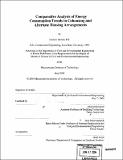| dc.contributor.advisor | John Ochsendorf. | en_US |
| dc.contributor.author | Brown, Jason R. (Jason Robert), 1975- | en_US |
| dc.contributor.other | Massachusetts Institute of Technology. Dept. of Civil and Environmental Engineering. | en_US |
| dc.date.accessioned | 2006-03-24T18:23:22Z | |
| dc.date.available | 2006-03-24T18:23:22Z | |
| dc.date.copyright | 2004 | en_US |
| dc.date.issued | 2004 | en_US |
| dc.identifier.uri | http://hdl.handle.net/1721.1/30142 | |
| dc.description | Thesis (S.M.)--Massachusetts Institute of Technology, Dept. of Civil and Environmental Engineering, 2004. | en_US |
| dc.description | Includes bibliographical references (p. 91-92). | en_US |
| dc.description.abstract | The sizes of both single-family and multifamily homes have grown steadily in the United States over the last fifty years. During this time, despite more efficient production processes, energy consumption in the country also rose. The many concerns associated with increased energy consumption include hastening depletion of fossil fuel resources, increased dependence on foreign resources for fuel, environmental concerns related to fossil fuel emissions, and ensuring all people have access to economic energy sources. Awareness of the necessity to engage in more sustainable practices (environmentally, economically, and socially) has existed at least since the 1960s. The United Nations formalized these concerns in the 1987 publication, "Our Common Future" in which they defined and popularized the term "sustainable development." Despite this awareness and the continuing efforts of governmental and non-governmental agencies to reduce the impact of energy consumption, the rate of consumption has continued to rise and the rate of growth of energy consumption has only seen marginal improvements in the United States (and has risen dramatically in some developing countries such as China and India). | en_US |
| dc.description.abstract | (cont.) One way to reduce the rate of consumption or slow the rate of growth is to reduce the impact of the United States housing market through demand management techniques and energy efficient construction. Cohousing offers one opportunity to accomplish that goal. This thesis outlines the background information related to U.S. energy consumption and housing trends, the relative impact of energy consumption in cohousing, and the challenges of implementing cohousing on a large enough scale to make an impact in nation-wide consumption trends. | en_US |
| dc.description.statementofresponsibility | by Jason R. Brown. | en_US |
| dc.format.extent | 92 p. | en_US |
| dc.format.extent | 3151151 bytes | |
| dc.format.extent | 3150960 bytes | |
| dc.format.mimetype | application/pdf | |
| dc.format.mimetype | application/pdf | |
| dc.language.iso | eng | en_US |
| dc.publisher | Massachusetts Institute of Technology | en_US |
| dc.rights | M.I.T. theses are protected by copyright. They may be viewed from this source for any purpose, but reproduction or distribution in any format is prohibited without written permission. See provided URL for inquiries about permission. | en_US |
| dc.rights.uri | http://dspace.mit.edu/handle/1721.1/7582 | |
| dc.subject | Civil and Environmental Engineering. | en_US |
| dc.title | Comparative analysis of energy consumption trends in cohousing and alternate housing arrangements | en_US |
| dc.type | Thesis | en_US |
| dc.description.degree | S.M. | en_US |
| dc.contributor.department | Massachusetts Institute of Technology. Department of Civil and Environmental Engineering | |
| dc.identifier.oclc | 56017792 | en_US |
